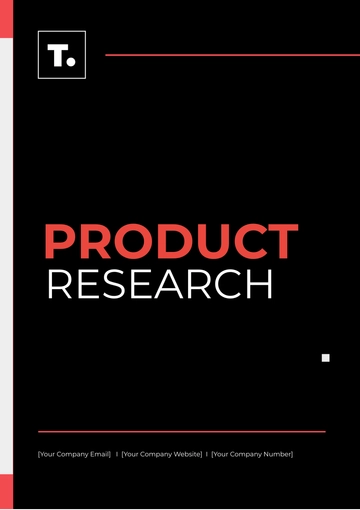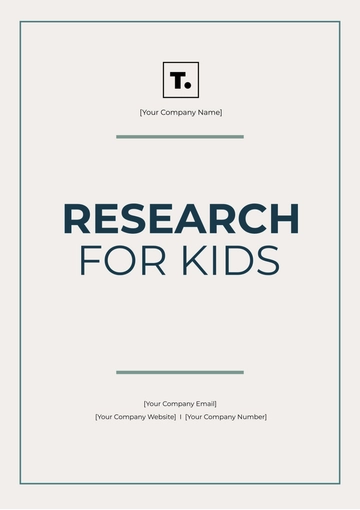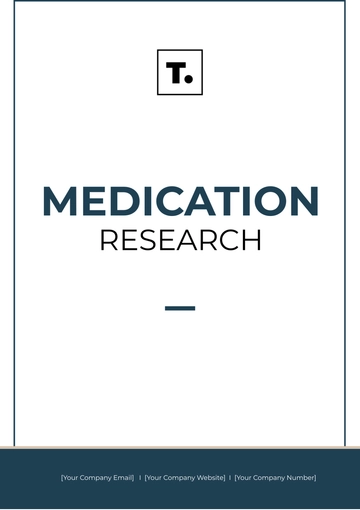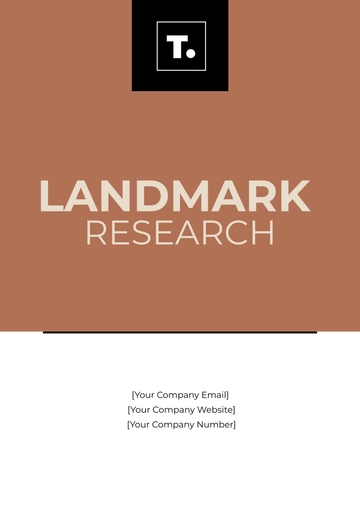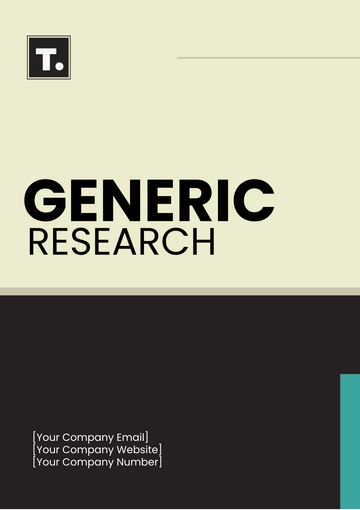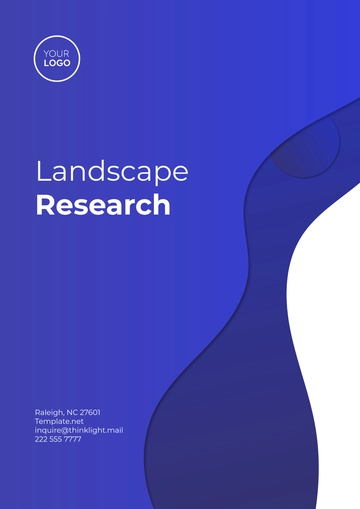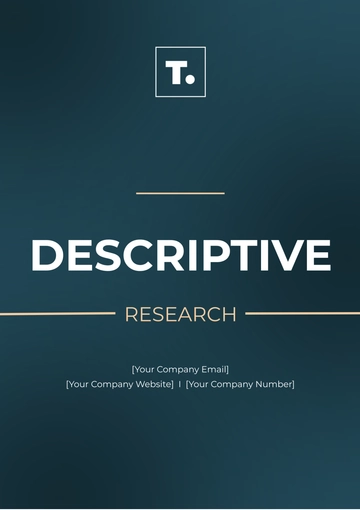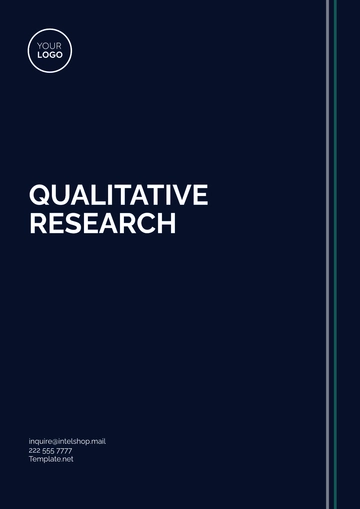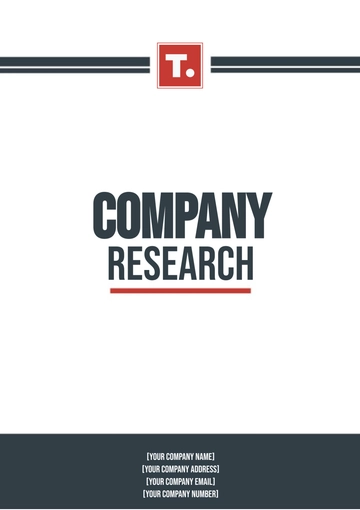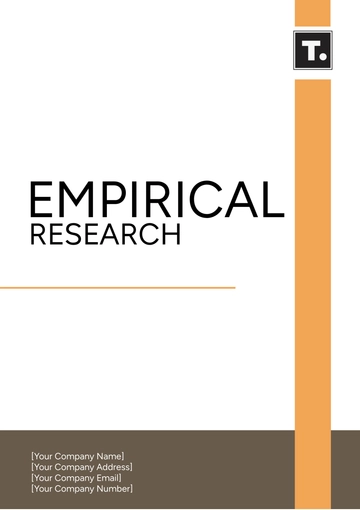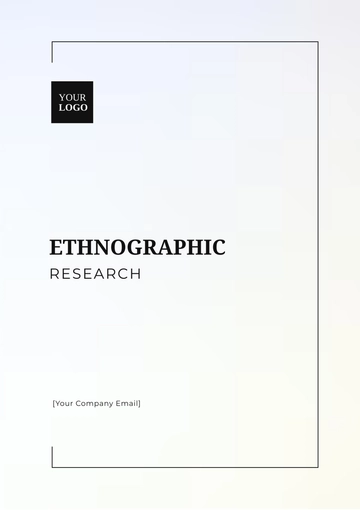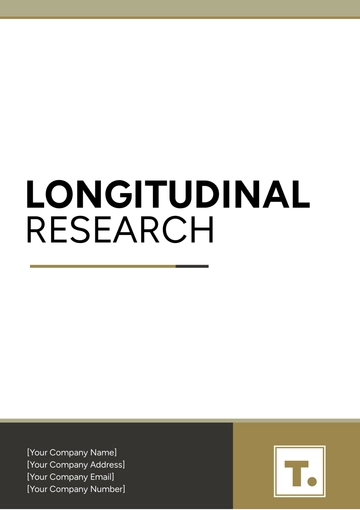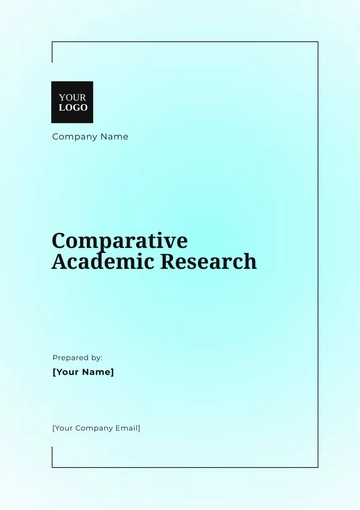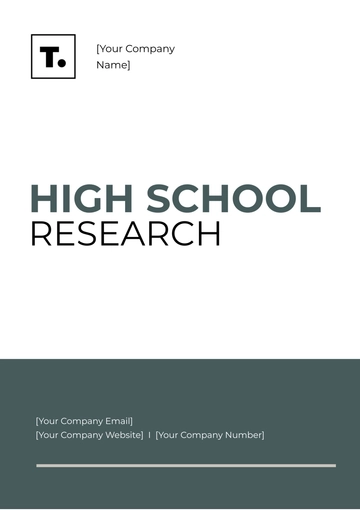Free Marketing Detailed Research on Media Landscape
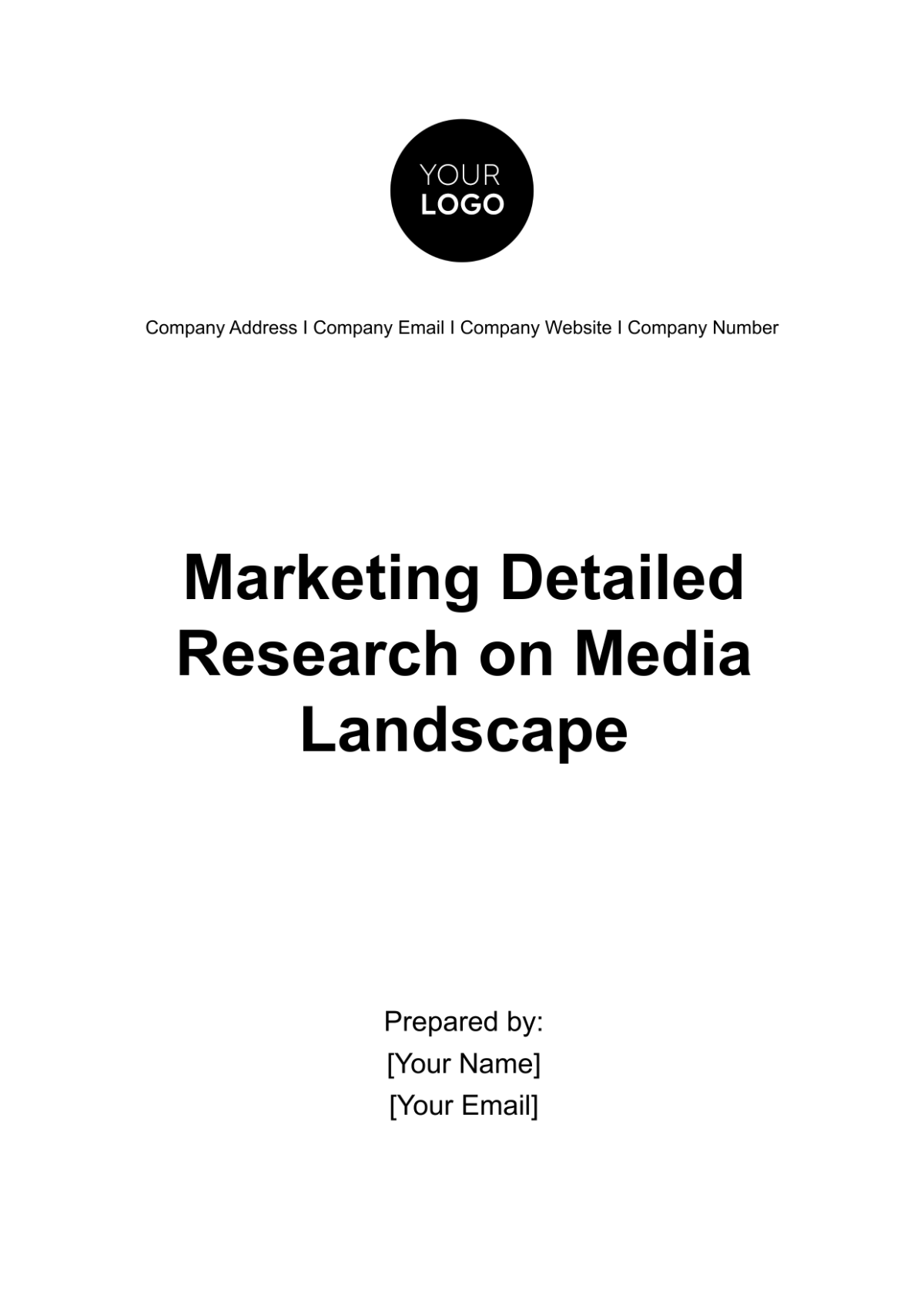
Media Landscape
1. Executive Summary
The media landscape research conducted by [Your Company Name] reveals critical insights that will shape our marketing strategies moving forward. This comprehensive analysis of the media environment within the Health and Wellness industry provides us with a clear understanding of where and how to engage our target audience effectively.
1.1 Key Findings and Insights:
Media Channel/Platform Dominance: Our research highlights that Healthy Lifestyle Magazine emerges as the dominant media channel/platform in this market, commanding a substantial market share of 34%.
Audience Demographics: Our target audience, as identified through this research, exhibits the following demographics on this channel/platform:
Age: 25-45
Gender: 60% Female, 40% Male
Income: $40,000 - $80,000
Education: College Graduates
Other demographics: Fitness Enthusiasts, Health-Conscious Individuals
Market Trends: Current trends in the Health and Wellness industry indicate a notable shift towards Digital Health Content Consumption, which presents significant opportunities for our marketing efforts.
Competition Landscape: We have identified key competitors in this space, including Wellness Today, Healthy Living Insights, and Health Hub. A detailed analysis of their strategies and market share is provided in section 6.
Advertising Opportunities: Our research delves into the various advertising options available across media channels/platforms, offering insights into the most cost-effective and high-impact strategies.
These findings will guide us in crafting marketing campaigns tailored to the preferences and behavior of our target audience, maximizing our reach and impact within the Health and Wellness sector.
2. Introduction
2.1 Background:
The Health and Wellness industry is a dynamic and competitive sector characterized by rapid changes in consumer behavior and media consumption patterns. Understanding the media landscape within this market is pivotal for [Your Company Name] to remain at the forefront of effective marketing strategies.
The media landscape encompasses a wide array of platforms, from traditional television and radio to digital and social media channels. Each of these platforms plays a unique role in reaching our target audience and conveying our brand message effectively.
2.2 Objectives:
The primary objectives of our media landscape research are as follows:
Comprehensive Understanding: To gain a comprehensive understanding of the media channels and platforms available within the Health and Wellness industry.
Audience Profiling: To profile the demographics of our target audience across these media channels/platforms, allowing us to tailor our content and messaging effectively.
Competitive Analysis: To identify key competitors and assess their strategies, strengths, weaknesses, and market share within the media landscape.
Trend Analysis: To analyze current and emerging trends within the media landscape and identify opportunities for innovation in our marketing strategies.
Optimize Advertising: To explore advertising and sponsorship opportunities across various media channels/platforms and provide recommendations for optimizing our ad spend.
This research aims to equip [Your Company Name] with the insights necessary to make informed decisions in shaping our media-centric marketing initiatives.
3. Media Channels and Platforms
3.1 Media Channel/Platform 1: Healthy Lifestyle Magazine
Description:
Healthy Lifestyle Magazine is a prominent and influential medium within the Health and Wellness industry. It serves as a platform for promoting health and wellness content, offering insightful articles, expert advice, and lifestyle tips to its audience.
Audience Demographics:
Age: 25-45
Gender: 60% Female, 40% Male
Income: $40,000 - $80,000
Education: College Graduates
Other relevant demographics: Fitness Enthusiasts, Health-Conscious Individuals
Market Share:
Healthy Lifestyle Magazine commands a significant market share of approximately 34% within the Health and Wellness industry.
3.2 Media Channel/Platform 2: Wellness Today
Description:
Wellness Today is another notable player in the Health and Wellness media landscape. This platform specializes in delivering up-to-date wellness news, expert interviews, and lifestyle features to its engaged audience.
Audience Demographics:
Age: 18-55
Gender: 50% Female, 50% Male
Income: $35,000 - $70,000
Education: High School Graduates to Postgraduates
Other relevant demographics: Wellness Enthusiasts, Individuals Seeking Holistic Health Information
Market Share:
Wellness Today maintains a substantial market share, capturing approximately 27% of the Health and Wellness media landscape.
4. Audience Demographics
Understanding the demographics of our target audience across various media channels/platforms is essential for crafting precise and effective marketing strategies. The following is a detailed breakdown of audience demographics for the media channels/platforms identified in section 3:
Media Channel/Platform | Age Distribution | Gender | Income Distribution |
Healthy Lifestyle Magazine |
|
|
|
Wellness Today |
|
|
|
Media Channel/Platform | Education | Other Demographics |
Healthy Lifestyle Magazine |
|
|
Wellness Today |
|
|
5. Market Trends
5.1 Current Trends:
The current media landscape in the Health and Wellness industry is characterized by several notable trends:
Digital Dominance: There is a clear shift towards digital media consumption. Online platforms, including social media, websites, and mobile apps, have seen a substantial increase in user engagement for health-related content.
Video Content Surge: Video content, especially short-form and live videos, has gained immense popularity. Users are increasingly turning to platforms like YouTube, TikTok, and Instagram for quick health tips and workout routines.
Personalization: Consumers now expect personalized content and experiences. Tailoring content to specific user preferences and health goals has become a competitive advantage.
Health Tech Integration: The integration of health-related technology, such as wearables and health apps, into media platforms is on the rise. These technologies provide real-time health data and content recommendations.
5.2 Emerging Trends:
In the near future, we anticipate the following trends to impact the media landscape in the Health and Wellness industry:
Virtual Reality (VR) Health Content: VR technology is poised to transform health and wellness content delivery, offering immersive experiences for fitness, therapy, and health education.
Voice-Activated Health Assistance: Voice-activated devices like smart speakers will play a more significant role in providing health information and guidance.
Sustainability and Wellness: The intersection of wellness and sustainability will become a key theme, influencing both content creation and consumer choices.
Augmented Reality (AR) Fitness: AR will enhance the fitness experience by overlaying digital information onto the real world, creating interactive and engaging workouts.
Competitive Landscape
6.1 Key Competitors:
In our analysis of the media space within the Health and Wellness industry, we have identified key competitors. Here is a brief overview of each competitor:
Competitor 1: Wellness Today
Market Share: 27%
Strengths: Extensive content library, strong social media presence, diverse audience engagement.
Weaknesses: Limited international reach, reliance on traditional advertising.
Strategies: Focused on user-generated content, partnerships with health influencers, and continuous content innovation.
Competitor 2: HealthVibe Media
Market Share: 18%
Strengths: Established brand, extensive partnerships, international reach.
Weaknesses: Limited digital presence, advertiser dependency, slow adaptation.
Strategies: Content diversification, data-driven insights, e-commerce integration.
7. Advertising and Sponsorship Opportunities
7.1 Media Channel/Platform Advertising Options:
Healthy Lifestyle Magazine
Ad Formats: Display Ads, Sponsored Articles, Video Ads
Estimated Costs: Display Ads: $2,000 per month, Sponsored Articles: $5,000 per article, Video Ads: $3,500 per 30-second spot
Potential Reach: Display Ads: 500,000 impressions per month, Sponsored Articles: 100,000 readers per article, Video Ads: 300,000 views per video
Wellness Today
Ad Formats: Banner Ads, Sponsored Podcasts, Native Advertising
Estimated Costs: Banner Ads: $1,500 per month, Sponsored Podcasts: $8,000 per episode, Native Advertising: $4,500 per placement
Potential Reach: Banner Ads: 400,000 impressions per month, Sponsored Podcasts: 50,000 listens per episode, Native Advertising: 200,000 readers per placement
8. Regulatory and Legal Considerations
In the Health and Wellness media landscape, there are several key regulations and legal considerations that can impact operations:
Intellectual Property Rights: Content must adhere to copyright laws to avoid infringement issues.
Censorship: Certain regions may have restrictions on health-related content, requiring careful content moderation.
Content Restrictions: Compliance with advertising standards and health claims regulations is essential to maintain credibility and avoid legal disputes.
9. Data Sources and Methodology
9.1 Data Sources:
Our media landscape research relied on a combination of primary and secondary data sources:
Surveys: We conducted surveys among a representative sample of our target audience to gather insights into their media preferences.
Interviews: In-depth interviews with industry experts provided valuable qualitative data.
Publicly Available Data: We analyzed publicly accessible industry reports and data from government sources to supplement our research.
9.2 Methodology:
Our research methods included:
Quantitative Analysis: We used statistical tools to analyze survey data, determining audience demographics and media preferences.
Qualitative Analysis: Expert interviews provided qualitative insights into emerging trends and audience behavior.
Competitive Analysis: A comprehensive review of competitor strategies, strengths, and weaknesses.
10. Conclusion
In conclusion, our media landscape research within the Health and Wellness industry has yielded critical insights:
Dominant media channels/platforms with substantial market share.
Detailed audience demographics guiding content and ad targeting.
Current and emerging trends in media consumption.
A competitive landscape highlighting key competitors' strategies.
11. Recommendations
Based on our findings, we recommend the following strategies:
Increase Digital Presence: Strengthen our digital presence to engage younger audiences through platforms like TikTok and Instagram.
Leverage Data Analytics: Implement data-driven content personalization to enhance user experiences.
Explore E-commerce: Explore e-commerce integration to offer health products and supplements directly to consumers.
Appendices
Survey Questionnaires
Raw Data
Charts and Graphs
These appendices provide supplementary information that supports the research presented in this document.
- 100% Customizable, free editor
- Access 1 Million+ Templates, photo’s & graphics
- Download or share as a template
- Click and replace photos, graphics, text, backgrounds
- Resize, crop, AI write & more
- Access advanced editor
Gain valuable insights with the Marketing Detailed Research on Media Landscape Template, available on Template.net. This editable and customizable template offers in-depth analysis of media trends. Seamlessly refine findings with our Ai Editor Tool, tailoring research to your specific needs. Elevate your marketing strategy with comprehensive knowledge of the media landscape.


